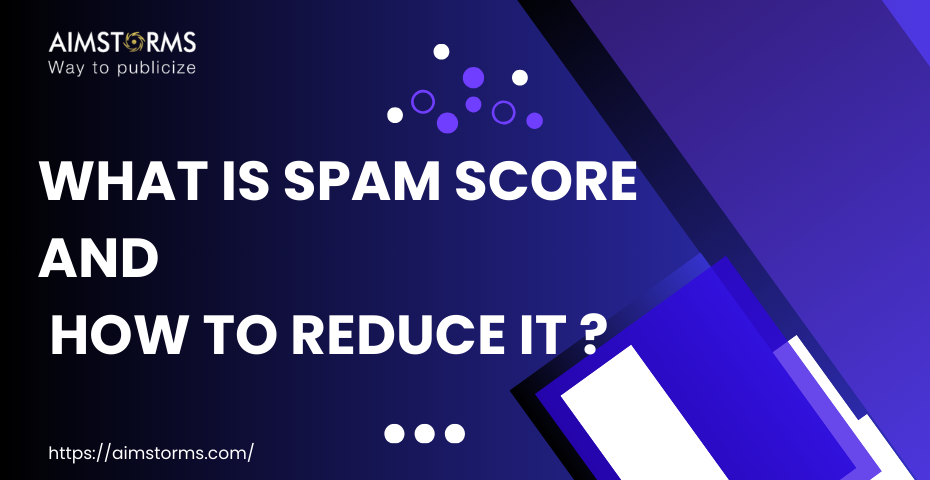In today’s digital age, maintaining a strong online presence is essential for any business. One of the key aspects to ensure your content reaches the intended audience is to understand and manage your spam score. In this blog, we will explain what a spam score is, why it matters, and how to reduce it in simple, easy-to-understand points.
1. What is a Spam Score?
- Definition: A spam score is a metric used to measure the likelihood that a website or an email will be flagged as spam by search engines or email providers. This score is typically expressed as a percentage, with a higher percentage indicating a higher chance of being considered spam.
- Origin: Spam score systems were developed to help identify low-quality or potentially harmful content and prevent it from affecting search engine results or inboxes.
- Range of Scores: Generally, spam scores range from 0% (low risk) to 100% (high risk). Websites or emails with a spam score above 5-7% may face issues with delivery and ranking.
2. Why Does Spam Score Matter?
- Search Engine Rankings: A high spam score can negatively impact your website’s SEO, causing it to rank lower on search engine results. This can lead to reduced organic traffic and affect your business growth.
- Email Deliverability: For email marketing campaigns, a high spam score increases the chances that your emails will be filtered into spam folders, reducing the likelihood of recipients seeing your content.
- Reputation Management: Websites with high spam scores may be perceived as unreliable or fraudulent, which can harm your brand’s reputation and credibility.
- User Trust: Ensuring a low spam score signals to your audience that your content is trustworthy and safe to engage with.
3. How to Reduce Spam Score
To reduce your spam score and improve your website’s performance, follow these essential steps:
A. Improve Content Quality
- Use Original and High-Quality Content: Make sure your content is unique, informative, and valuable to readers. Avoid using duplicate content that can be flagged by search engines.
- Avoid Keyword Stuffing: Overusing keywords in an unnatural way can trigger spam filters. Keep your content organic and use keywords strategically.
B. Check Your Backlinks
- Audit Your Backlinks Regularly: Backlinks from low-quality or spammy websites can increase your spam score. Use tools like Moz, Ahrefs, or SEMrush to check and remove harmful backlinks.
- Focus on High-Quality Links: Work on building relationships with reputable websites for backlinks. This will improve your domain authority and reduce your spam score.
C. Use Reliable Hosting Services
- Choose Trusted Hosting Providers: Low-quality hosting services can impact your website’s performance and increase your spam score. Make sure to use hosting providers with a good reputation.
D. Monitor Your Domain and Content
- Check Domain Health: Keep an eye on the overall health of your domain. Tools like Google Search Console and Moz can help you identify and fix issues.
- Update Outdated Content: Regularly review and update old content to ensure it is still relevant and accurate. Outdated content can lead to a higher spam score.
E. Optimize Email Practices
- Maintain a Clean Email List: Ensure that your email list is up-to-date and free from inactive or invalid email addresses. This will reduce bounce rates and improve deliverability.
- Avoid Spam Trigger Words: Certain words like “free,” “urgent,” or “guaranteed” can trigger spam filters. Use them sparingly and with caution.
- Authenticate Your Emails: Implement email authentication protocols such as SPF, DKIM, and DMARC to enhance your email’s credibility and reduce the risk of being marked as spam.
F. Enhance Website Security
- Install SSL Certificates: Securing your website with SSL certificates not only protects data but also signals to search engines that your website is trustworthy.
- Use Anti-Spam Plugins: For websites using CMS platforms like WordPress, plugins such as Akismet can help filter out spammy content and comments.
Final Thoughts
Understanding and managing your spam score is essential for maintaining your online presence and ensuring that your content reaches your audience. By following the above steps and regularly monitoring your website’s health, you can keep your spam score low, protect your reputation, and enhance your overall digital performance. AimStorms is dedicated to helping businesses succeed online—start implementing these practices today for better results!


Kapil
Highly descriptive post, I loved that a lot.